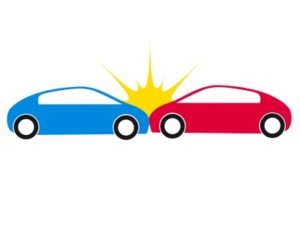
“When do I drop collision coverage?” is a very common question posed to insurance agents and for good reason. Since the pandemic started, insureds are looking for creative ways to save money on their auto insurance policies. Relative to the cost of the other auto insurance coverages found on most personal auto policies (including but not limited to at-fault liability, no-fault coverage, uninsured motorist coverage), collision coverage can be expensive. So it’s fairly reasonable that insurance buyers tend to focus on this expense when reviewing their auto policies.
First, let’s get an understanding for exactly what collision coverage is. According to the Insurance Information Institute:
Collision Coverage – pays for damage to your car resulting from a collision with another car, object or as a result of flipping over. It also covers damage caused by potholes.
Collision is a “physical damage” coverage, meaning the damage done to your own vehicle. It does not provide coverage for any bodily injury or damage done to a human being. Collision also does not provide coverage for damage done to anyone else’s car. This is physical damage to your car only.
So When Is A Good Time To Drop Collision Coverage?

We are laying out some tools and rules of thumb that you can use in making the determination as to whether dropping collision coverage is a good decision for your insurance program.
Tool #1 – Kelley Blue Book Online – Kelley Blue Book (KBB) is essentially the car industry standard for determining the value of a vehicle at any given time. Independent insurance agents aren’t car salesmens, so we aren’t qualified to guess what your vehicle is worth. Go to KBB and get a solid estimate.
Tool #2 – Cars.com – Similar to KBB, Cars.com can provide you with an estimate of the value of your car. We encourage you to take the time to look at this tool as well.
Now that you have an understanding of the value of your car, lets talk about some rules of thumb to consider:
Rule of Thumb #1 – More Than 8 Years Old – It is our practice to begin having conversations about removing collision coverage when cars reach ~ eight years old. It has been our experience that this is when many autos begin to lose significant value.
Rule of Thumb #2 – Are You Obligated To Hold Coverage? – Another good time to look into dropping your collision coverage is when you are no longer obligated to hold coverage by the financial institution that you took a loan from to purchase the vehicle. This tends to be true for people who bought a used car.
Here is the an equation that we go through with our insureds when helping to determine if they need collision:
Premium = Value of Vehicle – Deductible
Is the premium you are paying for coverage worth the value of the vehicle minus the deductible you will have to pay in the event of an accident? Quick example: say you are paying $250 a year for collision on a 2010 Dodge with a $500 deductible. The value in its current state is ~$5,000. You have to determine if:
$250 a year = $5000 – $500
That is NOT a question we can answer for you. You have to make that decision on your own as the policy owner. For some, it will be worthwhile and for others it will not.
Have a question? Email me at bridget@murraygrp.com or call 518-777-7777.
The Murray Group is committed to bringing security to our partners lives. We provide you with valuable tips and advice that you can apply in your daily life. Visit our blog for tons of information on all kinds of insurance.
If you would like to receive a proposal for homeowners insurance, auto insurance, or business insurance, please contact us:
Contact Murray Group Insurance Advisor
Also, you can connect with The Murray Group further on The Murray Group Facebook Page.
Disclaimer: This article is for informational purposely only. Legal advice is not being suggested. The author assumes no responsibility or liability for the actions taken or not taken by the readers based upon such information.
Photo by takahiro taguchi on Unsplash
